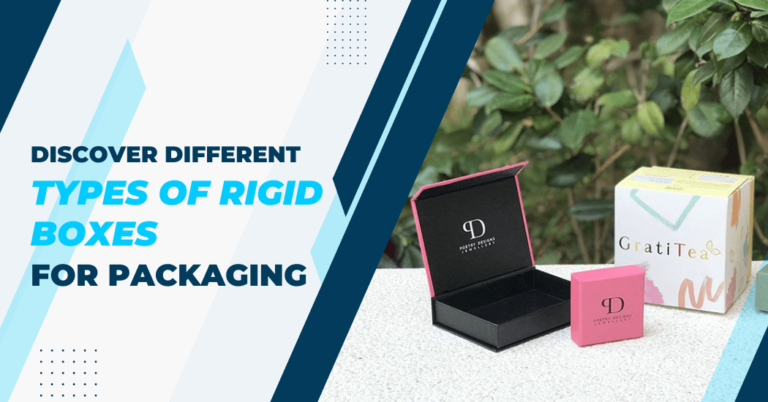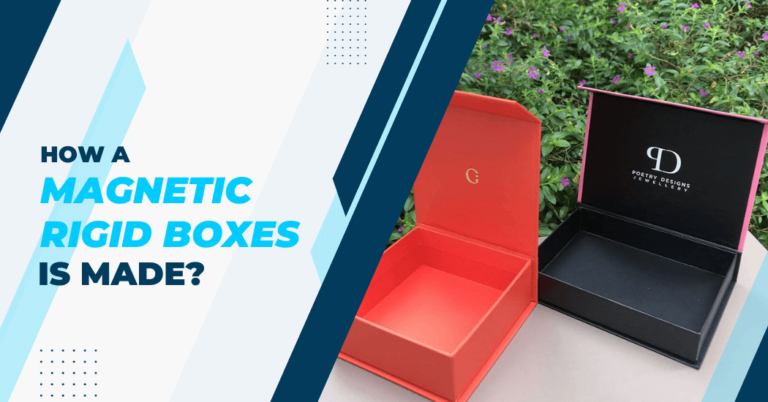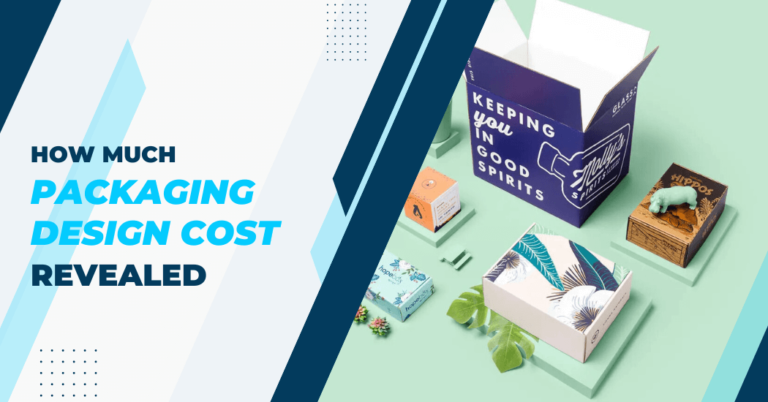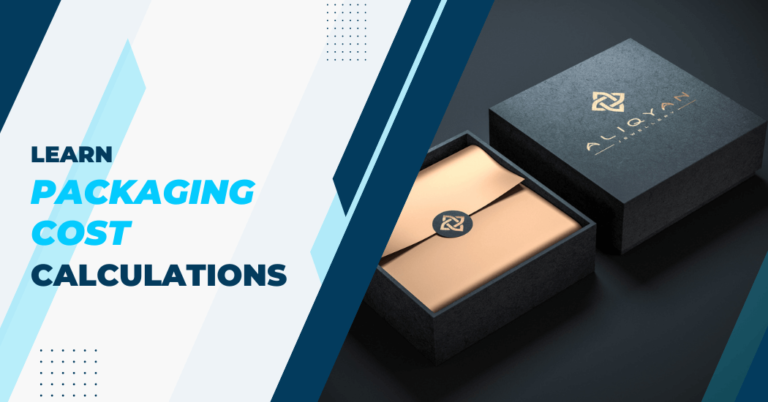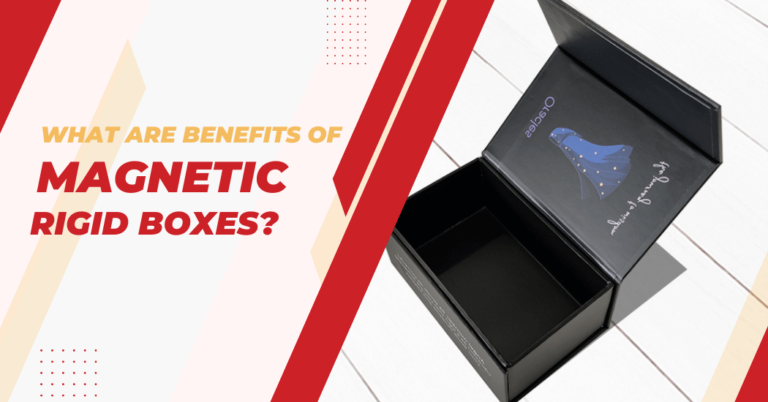What the difference between a rigid box and a corrugated box?
Packaging plays a crucial role in the protection and presentation of goods and two commonly used types are rigid boxes and corrugated boxes.
These boxes serve distinct purposes in the realm of packaging, offering unique features and advantages. Understanding the fundamental differences between rigid and corrugated boxes is essential for businesses seeking optimal packaging solutions for their products.
In this discussion, we will delve into the key distinctions between rigid and corrugated boxes, shedding light on their respective characteristics, uses and suitability for diverse packaging requirements.
What are rigid boxes?
Rigid boxes also known as setup boxes or gift boxes, are renowned for their robust structure and durability. They are made of high-quality materials such as paperboard, chipboard and cardboard with a smooth surface finish. These materials give rigid boxes a sturdy and non-flexible build that allows them to maintain their shape even under pressure.
One of the defining characteristics of rigid boxes is their unique construction, which includes a separate lid and base that are assembled to create a box. The lid slides over the base, providing a secure closure and adding to the overall strength of the box.
Rigid boxes come in various sizes and shapes, making them suitable for diverse packaging needs. They also offer extensive customization options including embossing, debossing, foiling and printing, making them ideal for luxury packaging and gift boxes.
What are corrugated boxes?
Corrugated boxes, also known as cardboard boxes or shipping boxes, are made of corrugated fiberboard. This material comprises three layers – an inner fluted layer sandwiched between two outer flat linerboards. The combination of these layers provides corrugated boxes with excellent strength and durability.
The fluted layer in corrugated boxes acts as a cushion, protecting against impact and damage during transportation. This feature makes corrugated boxes the go-to choice for shipping and storing goods that require extra protection.
Corrugated boxes come in a wide range of sizes, shapes and strengths, making them suitable for various packaging needs. They are also cost-effective and environmentally friendly, as they are made from recycled materials and can be easily recycled after use.
Rigid Boxes vs Corrugated Boxes
Here’s a table outlining the differences between a rigid box and a corrugated box:
| Feature | Rigid Box | Corrugated Box |
|---|---|---|
| Material | Solid, sturdy materials like paperboard, chipboard or wood. | Consists of three layers of paper – a wavy inner layer (corrugated medium) sandwiched between two flat outer layers. |
| Strength | Very strong and durable. | Durable but generally not as strong as rigid boxes. |
| Flexibility | Less flexible, maintains its shape. | It is more flexible, can be easily bent or folded. |
| Printing | Suitable for high-quality printing and finishes. | Good for printing but may not support intricate designs as well as rigid boxes. |
| Cost | Typically more expensive due to the use of high-quality materials. | Generally more cost-effective. |
| Weight | Heavier than corrugated boxes. | Lighter compared to rigid boxes. |
| Uses | Luxury packaging, gift boxes, high-end products. | Shipping, storage and product packaging across various industries. |
| Environmental Impact | May be less environmentally friendly, especially if made from non-recyclable materials. | More environmentally friendly as they are often made from recycled materials and the boxes themselves are recyclable. |
Keep in mind that the specific characteristics of rigid and corrugated boxes can vary based on the materials used and the intended purpose.
Which is better for shipping and storage purposes?
The answer to this question ultimately depends on the specific needs and requirements of a business. Both rigid boxes and corrugated boxes have their advantages and disadvantages, making them suitable for different purposes.
Rigid boxes are generally better for shipping high-end or delicate products that require extra protection during transportation. They are also ideal for creating a premium unboxing experience for customers. However, their higher cost and potential environmental impact may be a drawback for some businesses.
On the other hand, corrugated boxes are more versatile and cost-effective. They are suitable for a wide range of products and can withstand impacts during shipping. They are also considered more environmentally friendly due to their recyclability. However, they may not provide the same level of premium appearance that rigid boxes offer and may not be suitable for certain products or environments.
Therefore, it is important for businesses to carefully consider their packaging needs and budget when deciding between rigid boxes and corrugated boxes. They may also want to explore alternative packaging options such as flexible pouches or mailer boxes that offer a balance of durability, cost-effectiveness and eco-friendliness.
Pros and cons of using a rigid box
Pros:
- Premium appearance: Rigid boxes are associated with luxury and high-end products. They convey a sense of quality and value, making them ideal for premium products.
- Durability: The sturdy construction of rigid boxes provides excellent protection for delicate or expensive items, ensuring they reach their destination intact.
- Customization options: Rigid boxes offer extensive customization options, allowing businesses to create unique packaging that aligns with their brand and product.
- Printability: Rigid boxes are well-suited for high-quality printing and finishing options. This enables brands to showcase intricate designs, vibrant colors and other visually appealing elements.
- Reusability: Rigid boxes can be reused for storage or repurposed for other uses, providing additional value and sustainability.
Cons:
- Cost: The use of high-quality materials and the intricate construction of rigid boxes make them more expensive than other packaging options.
- Weight: Rigid boxes are generally heavier than some alternative packaging solutions. This can increase shipping costs and have environmental implications, especially if the materials used are not eco-friendly.
- Environmental impact: While some rigid boxes are made from recyclable materials, others may not be environmentally friendly. The production and disposal of rigid boxes can have a greater environmental impact compared to more sustainable packaging alternatives.
- Storage space: Rigid boxes take up more storage space compared to flattened or collapsible packaging solutions, which can be a challenge for businesses with limited storage capabilities.
Pros and cons of using a corrugated box
Pros:
- Strength and durability: Corrugated boxes are known for their strength and durability. The combination of the linerboard and corrugated medium provides excellent resistance to crushing and impacts, making them suitable for protecting goods during transportation.
- Versatility: Corrugated boxes come in various sizes, shapes and strengths, making them suitable for a wide range of packaging needs.
- Printability: While not as versatile as rigid boxes in terms of printing options, corrugated boxes can still support high-quality printing and branding. This allows businesses to create visually appealing packaging without compromising on strength and durability.
- Cost-effective: Corrugated boxes are generally more cost-effective compared to rigid boxes, making them a popular choice for businesses looking to reduce packaging costs.
- Environmental impact: As mentioned earlier, corrugated boxes are often made from recycled materials and can be easily recycled after use, making them a more environmentally friendly packaging option.
Cons:
- Flexibility: Due to their construction with three layers of paper, corrugated boxes are more flexible and can be easily bent or folded. This may not be ideal for certain products that require a rigid container.
- Printing limitations: While they can support high-quality printing, corrugated boxes may not be suitable for intricate designs or finishes, as the wavy inner layer can affect the aesthetics.
- Appearance: Corrugated boxes are not typically associated with luxury products and may not convey a premium quality compared to rigid boxes.
- Weight limitations: While generally strong and durable, corrugated boxes have weight limitations and may not be suitable for heavy or bulky items.
- Not Suitable for certain environments: Corrugated boxes may not be the best choice for extreme temperature conditions or situations where they are exposed to harsh environmental factors. Extreme heat or cold can affect the integrity of the box.
Tips for choosing the right box for your needs
Here are some considerations to keep in mind when deciding between rigid and corrugated boxes:
- The nature of your product: If you have fragile items or products that require extra protection, corrugated boxes may be the better choice. Rigid boxes, on the other hand, are ideal for high-end or luxury products.
- Shipping requirements: If you need to ship your products over long distances or through rough handling, corrugated boxes may be a more suitable option due to their cushioning capabilities.
- Cost: Rigid boxes may be pricier than corrugated boxes, so consider your budget when making a decision.
- Customization needs: If you want to create a visually stunning packaging design, rigid boxes offer more options for customization. However, if you need simple branding and labeling, corrugated boxes can still be printed on and customized to a certain extent.
- Environmental impact: If sustainability is a priority for your brand, corrugated boxes may be the more eco-friendly choice. However, it’s worth noting that both rigid and corrugated boxes can be made from recycled materials and are recyclable themselves.
Ultimately, the best choice will depend on your specific packaging needs and preferences. Both rigid and corrugated boxes offer unique features that can benefit businesses in different ways.
By understanding their differences, you can make an informed decision and find the best packaging solution for your products.
Final Words
In conclusion, the difference between a rigid box and a corrugated box is quite substantial. Rigid boxes are strong and durable, making them ideal for packaging heavier items or those with unique shapes. On the other hand, corrugated boxes offer superior cushioning which makes them great for lighter or fragile items that need to withstand shock.
Ultimately, the choice between the two depends on the specific requirements of the packaging task at hand, considering factors such as aesthetics, protection and cost-effectiveness.
Understanding the distinctions between rigid and corrugated boxes empowers businesses and consumers to make informed decisions, ensuring that packaging aligns seamlessly with the demands of the product and the supply chain.


